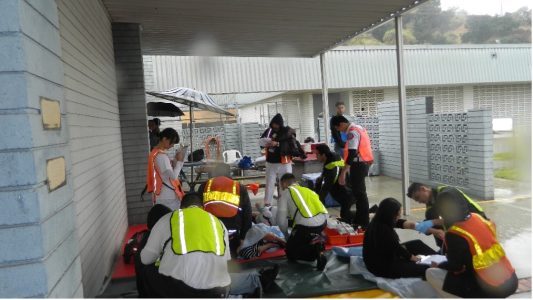Widgetized Section
Go to Admin » Appearance » Widgets » and move Gabfire Widget: Social into that MastheadOverlay zone
First Responders and the Bias Factor in Performance
The views expressed are those of the author and do not necessarily reflect the views of ASPA as an organization.
By Tracy Rickman, Ygnacio “Nash” Flores & Don Mason
August 11, 2023

In the wake of questionable performance by first responders, there is a focus on the effects of the bias triad of explicit, implicit and cognitive biases. These biases are not the same by definition, scope and practice. People have their biases formed from their life experiences. Likewise, first responders have their biases formed from their experiences with the communities they serve. Over time, first responders’ frequent interactions with the public shapes the biases they display across the spectrum of prejudicial perspectives. Explicit bias is a conscious attitude towards a social group that is negative. Implicit bias is an unconscious belief that shapes negative attitudes towards a specific social group. Cognitive bias is a subconscious error in people’s reasoning with their environment due to subjective perceptions of reality. Singularly or together, when the bias triad negatively influences the actions of first responders, their performance is seen as racist, discriminatory and non-inclusive.
The potential for explicit and implicit biases results from a first responder experiencing constant and sustained negative contact with the public. An example is repetitive nuisance calls to 911 from the same business or residence where there is no actual emergency. An illustration of cognitive bias is the stereotyping of people because of the way they look, act or speak. Stereotyping is a common heuristic the brain uses to fill the gaps in what is unknown. Looking different or speaking a different language may cause a first responder’s brain to fill in knowledge gaps with biased information.
Educating first responders to mitigate the triad of biases they develop while at work includes developing different types of intelligence. Emotional and cultural intelligence are two types of intelligence that can help first responders act without prejudice. Emotional intelligence is how a person understands, uses and manages their emotions to deal with stress, communicate and empathize with others. Cultural intelligence is understanding, respecting and working across multiple cultures. While there are other types of intelligence, these two types of intelligence must be developed in first responders.
The frustration first responders experience in their jobs deteriorates emotional and cultural intelligence, leading to unfavorable changes in behavior. First responders must be aware of their emotional and cultural intelligence in these situations. Awareness of one’s intelligence helps a first responder understand their internal biases and how others view their actions. First responders work for the public. Therefore, public mistrust of first responders affects a public safety organization’s ability to recruit and retain officers. It is imperative to include bias training in basic and in-service training programs for all first responder organizations.
First responders should be aware of their explicit biases since they serve all in a community, regardless of the distorted preferences they may have. People interacting with first responders reported they can tell when explicit bias is affecting the actions of first responders. These biases can include perceptions of age, ethnicity, gender and a person’s cognitive abilities. These biases can change a person’s rational viewpoint if the first responder perceives the environment threatened by unknown features. The death of Tyre Nicholas is an example of where not only law enforcement officers but also firefighters and EMS personnel lost their jobs. The officers’ various biases affected their duty to act when responding to the Nicholas call.
Although the law enforcement community now conducts explicit bias training in their academies, all first responders must explore education and training in cognitive, explicit and implicit biases. Fire and EMS agencies must now include bias-based training in their training programs if they are not currently doing so. Making employees and volunteers aware of societal biases is the best way for an organization to prevent biased-based performance.
Training academies currently teach the basic and advanced skills first responders need to complete their assignments. While traditional training focuses on perishable manipulative skills, the same focus needs to be spent on the soft skills that form different types of intelligence. By doing this, public safety organizations fulfill their duty of due diligence in preparing their officers and other responders to serve the public.
Training requirements for learning emotional and cultural intelligence need to increase from basic to in-service required training, to address the public’s demands for having the best trained and certified individuals in the “all-risk” public safety-first responder model. This training is paramount to ensure calls for service are made with the professionalism and humanity expected of the public. When people call 911 for assistance, they do not get to “pick” or choose their first responder. It is up to the community of first responders to ensure they know how to do their jobs, especially how to treat others as part of their learning platform. Professional first responders interact with the community often and, thus, need to explore any biases they may have to ensure they always serve the public with professional compassion.
Authors: Dr. Tracy Rickman is faculty at Tarleton State University. Dr. Ygnacio “Nash” Flores and Don Mason are faculty at Rio Hondo College.


Don Davies
August 4, 2024 at 8:48 pm
Our entire medical response team recently attended a first responder training hosted by https://events.echelonfront.com/first-responder-training/, which was both intriguing and beneficial. We learned a lot from this session, and I believe it increased the expertise and productivity of my staff. I would absolutely recommend them to other first responders.